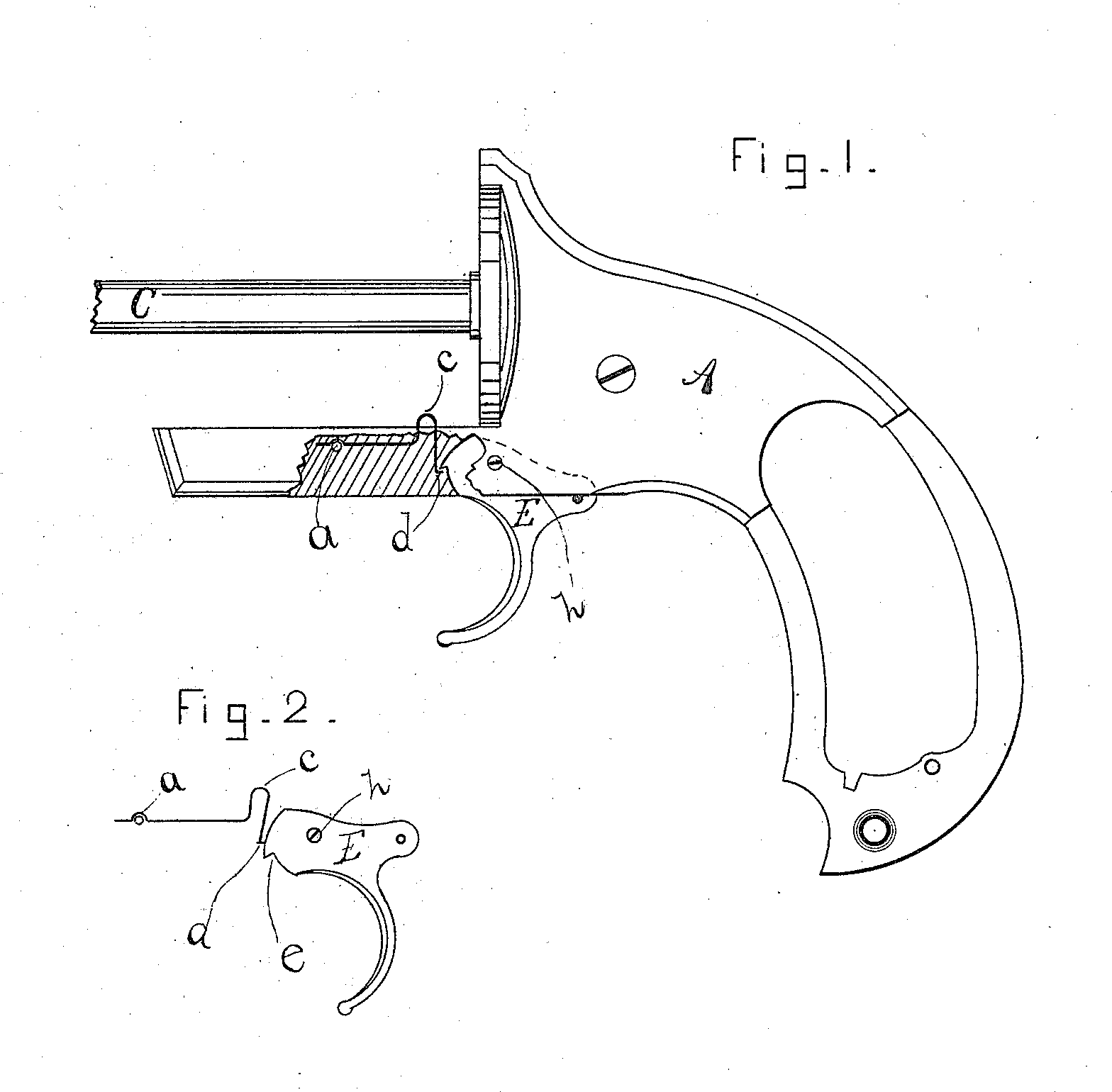US 294950
UNITED STATES PATENT OFFICE.
FRANK H. ALLEN, OF NORWICH, CONNECTICUT.
CYLINDER-STOP FOR REVOLVERS.
SPECIFICATION forming part of Letters Patent No. 294,950, dated March 11, 1884.
Application filed August 9, 1883, (No model.)
To all whom, it may concern:
Be it, known that I, Frank H. Allen, of the city of Norwich, county of New London, and State of Connecticut, have invented certain new and useful Improvements in Revolving Fire-Arms, which improvements are fully set forth and described in the following specification, referenee being had to the accompanying drawings.
My improvement relates particularly to that part of the mechanism of a revolving arm commonly known as the “cylinder bolt or stop,” the office of said stop being to hold the cylinder rigidly in line with the barrel while in the act of firing.
My immediate object is to produce a cylinder-stop for double-acting and self-cocking arms which shall be extremely simple in construction, cheaply made and fitted to the arm, and which shall be practically indestructible.
Figure 1 is a side view of a revolver-frame containing my new stop, a portion of the frame being cutaway to show more clearly the method of securing the stop in place, and also to show its position relative to the trigger of the arm. Fig. 2 is a detached view of the trigger and stop, showing the trigger in the act of passing the stop on its return-stroke.
My stop is made of a single piece of flattened steel wire or spring brass, bent substantially as shown in the annexed drawings-that is to say, near the forward end of the piece is a depression, a, across which passes a suitable pin or screw to secure the stop rigidly in the frame, so that there shall be no lengthwise movement of the stop after it is located in the frame. From the bend a the flattened wire passes rear ward until it reaches the opening in the frame where the stop passes upward to engage the notches in the periphery of the cylinder. At this point the wire bends upward to the cylinder, making at the point where it intersects the cylinder a half circular bend and returns again into the frame, that part which returns from the cylinder being parallel, or nearly so, with the upward bend first above mentioned. The downward bend passes below the plane of the stop proper to a point where it is to engage the trigger. At this point a light-angular turn to the rear is made, said bend extending rearward one sixty-fourth of an inch, or thereabout, the sole object of said bend being to engage a suitable notch in the front side of the trigger which is provided to operate said stop. When the trigger is pulled rearward, as in the act of self-cocking the arm, the notch e on the trigger comes in contact with the bend d on the rear end of the stop and carries the stop downward, thus releasing the projection c from the cylinder-notch. The trigger, as it swings on its pivot, passes away from the stop, which springs upward and enters the next notch in the cylinder. When, after firing, the trigger swings forward to its proper position, the inclined surface on the front of the trigger engages the point d of the stop, and, as the stop is held by the frame and cannot spring upward, d is forced forward until the trigger passes above it, when it (d) springs under e and is again ready for business. When the trigger is drawn rearward, it is evident that the entire spring of the stop is at or near the point where it is secured to the frame at a; but when the trigger is swung forward after firing the spring is at or near c. By this means. I am enabled to obtain the same result with a single spring made of flattened wire that has heretofore been obtained by the use of a forged stop and a separate spring to operate said stop.
I claim as new and wish to secure by Letters Patent—
In combination with the trigger E, the within-described cylinder-stop, made of a single continuous piece of flattened wire bent substantially as shown, having a suitable arm adapted to lie in the frame, an upward extension, c, to engage the cylinder-notch, and the downward extension and bend d, to engage a suitable notch in the trigger, said stop being held in the frame and operated as and for the purpose specified.
FRANK. H. ALILEN.
Witnesses:
Robt. W. Perkins,
Amos C. Cutler.

